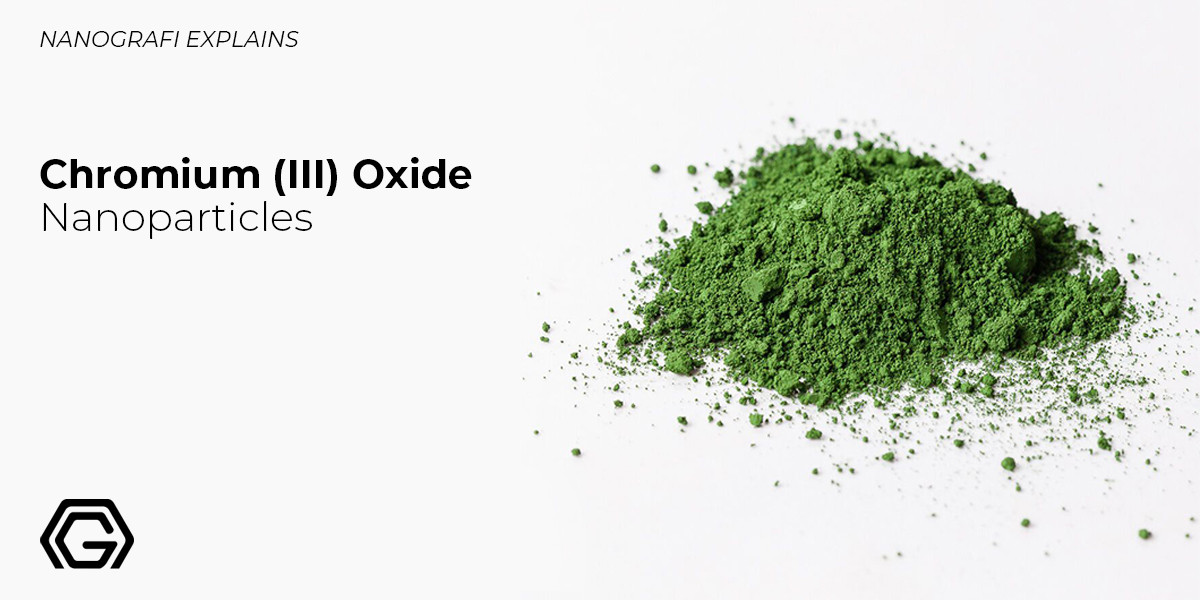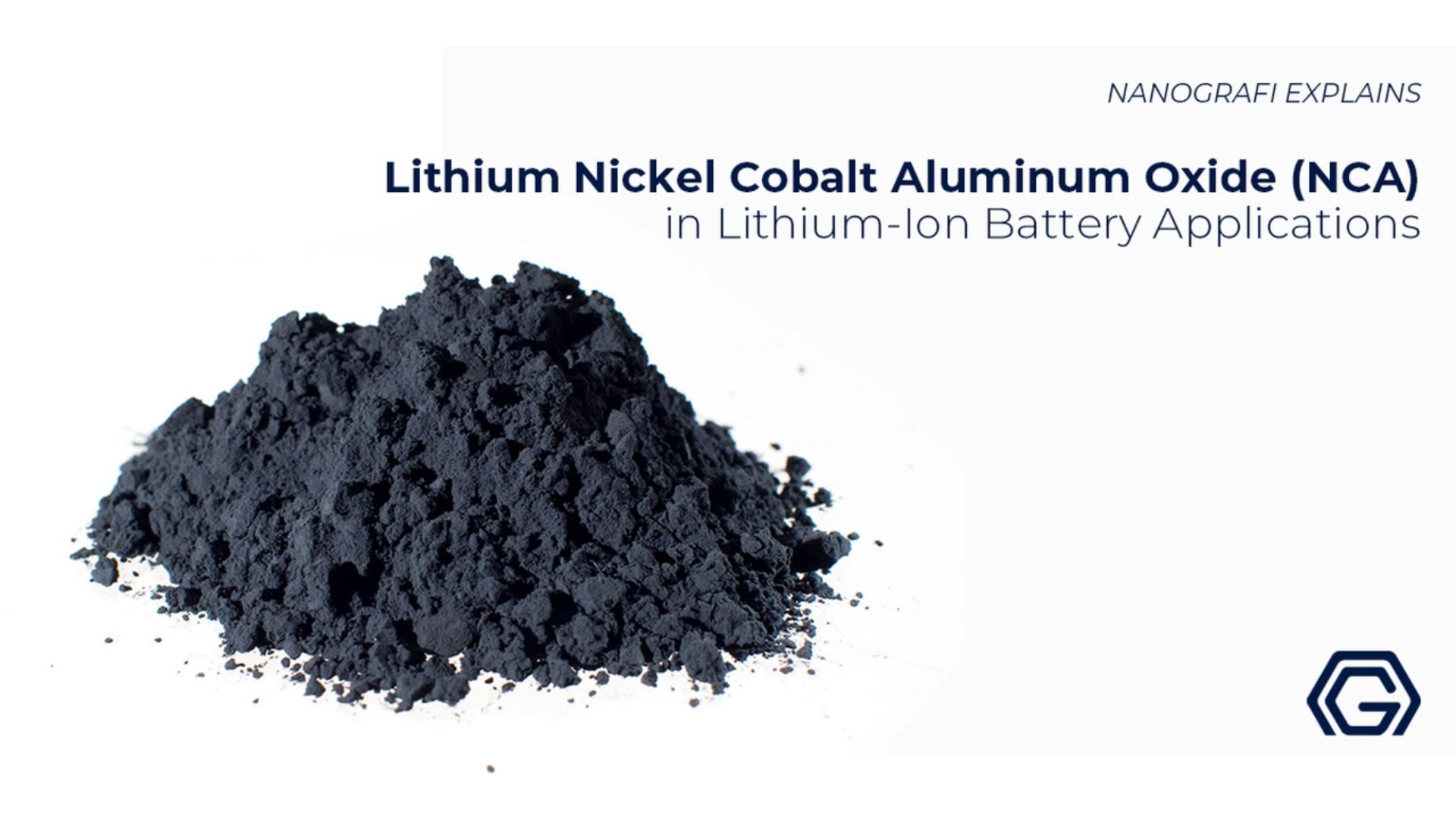Chromium (III) Oxide Nanoparticles
Chromium oxide with the formula of Cr2O3 is one of the main oxides of chromium used widely as in pigment production.
Chromium oxide occurs as a scarce mineral called Eskolaite crystallized like a hexagonal close-packed set of anionic oxides.
Vahid Javan Kouzegaran
Analytical Chemist (Ph.D.) / Nanografi Nano Technology
Introduction
Cr2O3 is physically a hard brittle metal and remains antiferromagnetic at temperatures as high as 37°C. The main reason behind developing methods to synthesize chromium oxide nanoparticles is their multiple applicability in various areas of industry and science namely in heterogeneous catalysts green pigments, coating materials for thermal resistance and corrosion. Studies have demonstrated that inorganic solids nanoparticles and nanocrystals possess properties that lead to improved and novel behaviors which are absent in their bulky forms. The novelty and quality of nanoscale-based properties directly depend on particle size, crystallinity morphology and surface area and nature.
Properties of Chromium Oxide Nanoparticles
Evaluation of functional inorganic solids demonstrate that transitional metal oxides are regarded as essential materials in industry due to their presence in a wide range of magnetic, thermal, chemical and electronic properties. Chromium oxide is an important component for industrial applications based on its wear resistance and high temperature qualities. Moreover, it can form different stable oxidation states. Chemically, chromium has various stable oxidation states. However, there has been particular attention to chromium (III) oxide due its versatility and intrinsic properties 1.
Biological Exposure to Chromium Nanoparticles
Regarding the common toxicity among the metal oxide nanoparticles, it is seems crucial to evaluate the biological exposure to chromium oxide nanoparticles. To do so, the alteration in brain and kidneys of rats as a consequence of exposure to chromium oxide nanoparticles has been investigated. Accordingly, reactive oxygen species (ROS) production seems to cause a considerable increase in malondialdehyde (MDA) concentration as well as a significant decline in superoxide dismutase and glutathione levels. The pathological evaluations show deleterious oxidative stress as a consequence of ROS generation 2.
Synthesis and Preparation of Chromium Oxide Nanoparticles
Due to widespread industrial applications of chromium oxide, there has been a lot of efforts to obtain its nanoscale crystals so far. Throughout the attempts to optimize the synthesis, the focus has been on the ease, green chemistry promises and economic aspects in order to obtain the most efficient method to fit these standards. In so doing, various methods have been introduced such as precipitation-gelation, urea-assisted homogeneous precipitation, gas condensation, combustion, gel citrate, microwave, mechano-chemical process, sol gel and hydrothermal methods 3.
Based upon a novel electrochemical method, chromium oxide nanoparticles are synthesized through reducing potassium dichromate solution using a plant extract called Mukia Maderaspatana. In this biological method, potassium dichromate is used with no further purification. The plants are dried and pulverized in mechanical grinding machine prior to use. Later the powdered plants are submerged in methanol for 24 hours in order to extract the organic material such as alkaloids, pheolics, amino acids and flavonoids. In the next step, the potassium dichromate is mixed with the plant extract and stirred for a quarter. The change in the color of the solution from orange to green is an indication of chromium oxide nanoparticles formation 3.
In other electrochemical methods, chromium oxide nanoparticles are synthesized in accordance with a couple of methods. The first technique comprises the use of platinum (Pt) electrodes in K2Cr2O7 solution with sulfuric acid (H2SO4) as the medium. Following this method, an electrochemical cell encompassing a voltage power, a reaction chamber and platinum electrodes is prepared placed in a solution of potassium dichromate and sulfuric acid as the medium. After application of a positive voltage for 3 hours while stirring, the color change in the solution from orange to dark green shows that the chromium nanoparticles have formed in the solution. In the final step, the solution was heated up at 100°C for two hours so that the liquid solution could evaporate with the leftover nanoparticles to be calcined at 650˚C - 700˚C in order to remove the sulfur dioxide and the moisture 3.
If you are interested in the applications of lithium-ion battery products,
you can read our blog post here.
In the second method, chromium doped platinum electrode (Pt/Cr) is employed in NaHCO3 solution. The preparation takes place in a reaction chamber containing NaHCO3. A voltage is applied to the platinum electrode as the cathode and Pt/Cr electrode serving as the anode for three hours. Dissolution of chrome in the anode yields Cr3+ cations due to electrolytic reaction to are capable of engaging in a reaction with aqueous NaHCO3 to produce chromium oxide nanoparticles. The solid product is washed in double distilled water several times in order to remove the unreacted NaHCO3 with the consecutive drying of at 100°C for dehydration and hydroxide removal 3.
In a precipitation method, chromium oxide nanoparticles are prepared in a fast process through using ammonia as an agent that serves to perform precipitation with particle size of 20 to 70 nm with most particles sized as 45 nm and thermal stability at temperatures up to 1000°C. Briefly, aqueous ammonia is added to a solution of Cr2(SO4)3 dropwise while continuous stirring and constant pH of about 10. The resulting precipitates are obtained through filtering long with washing in double distilled water and drying at 70°C for 24 hours and calcination in the final step 1.
Morphologically well-defined chromium oxide nanoparticles with particle sizes of 20 to 30 nm can be synthesized by hydrothermal approach. The synthetic procedure involves preparation of chromium oxy-hydroxide nanoparticles through precipitated xerogels with the consecutive thermal transformation of CrOOH nanoparticles to chromium oxide. The resulting particles size between 15 to 50 nm through a precise control of the precipitation’s pH. Based on the data, the non-aggregated oxy-hydroxide nanoparticles form in two different trends. Xerogels precipitate at pH of 5 with the smaller particle size, while the size of nanoparticles grow bigger at pH of 10.
Applications Chromium Nanoparticles
The major applications of chromium oxide nanoparticles are in heterogeneous catalysts, liquid crystal displays, wear resistant and high temperature materials and solar absorbents as well as functional pigments with high reflectivity in near-infrared region which is due to their optical properties. In addition, the catalytic application of chromium nanoparticles has been numerous reactions namely toluene oxidation, methanol decomposition and ethane dehydrogenation.
Conclusion
Chromium nanoparticles have mostly been employed industrially with extensive applications due to their optical, electronic and thermal properties. The biological exposure to chromium oxide nanoparticles can lead to reactive oxygen species with consequent oxidation reactions in biological environments. Therefore, proper precautions have to be take into consideration while working with them. The main application of chromium oxide nanoparticles as pigments is in green pigment production.
To get more information, you can visit Blografi.
References
1. Jaswal, V. S., Arora, A. K., Kinger, M., Gupta, V. D. & Singh, J. Synthesis and characterization of chromium oxide nanoparticles. Orient. J. Chem. 30, 559–566 (2014).
2. Fatima, R., Akhtar, K., Hossain, M. M. & Ahmad, R. Chromium oxide nanoparticle–induced biochemical and histopathological alterations in the kidneys and brain of Wistar rats. Toxicol. Ind. Health 33, 911–921 (2017).
3. R., Ananda, S. & Gowda, N. M. M. Synthesis of Chromium(III) Oxide Nanoparticles by Electrochemical Method and Mukia Maderaspatana Plant Extract, Characterization, KMnO<sub>4 </sub>Decomposition and Antibacterial Study. Mod. Res. Catal. 02, 127–135 (2013).
Recent Posts
-
Nanocomposites in Food Packaging
The utilization of nanocomposites in food packaging represents a significant advancement in the fiel …19th Apr 2024 -
What is the Difference Between 7075 and 6061 Aluminum Alloy?
When comparing 7075 aluminum alloy to 6061 aluminum alloy, it's essential to understand their disti …5th Apr 2024 -
Iron-Air Batteries: The Ultimate Guide
Iron-air batteries represent a significant breakthrough in energy storage technology, offering a sus …29th Mar 2024







